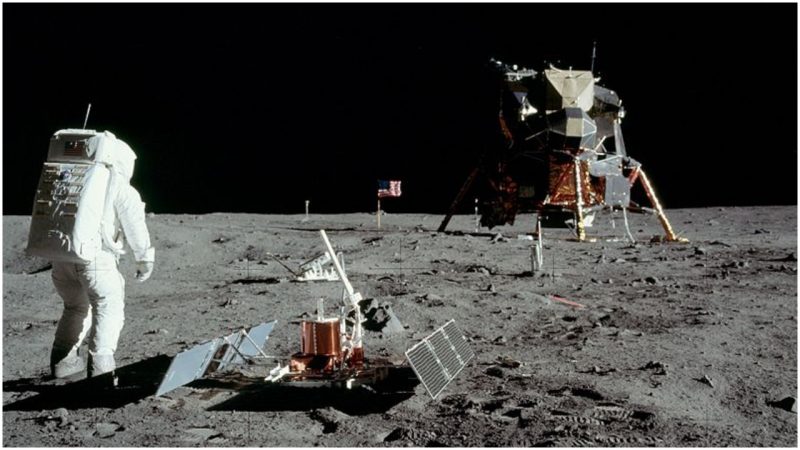Okay, who pooped on the Moon?
Well, that answer is obvious: astronauts. But, um, why and how did that happen?
Twelve astronauts from six Apollo missions between 1969 and 1972 walked on the Moon, making history and thrilling a nation that watched their progress on TV. On each journey, the astronauts spent at least a day picking up a few things to bring back to Earth for study. In fact, over three years they carted back quite a heavy haul: a total of 842 pounds of lunar rocks, core samples, pebbles, sand, and dust from the lunar surface, according to NASA’s Lunar Curation website.
The six Apollo missions returned 2,200 separate samples from six different exploration sites on the Moon. Today, the Apollo samples are stashed at the Lunar Sample Building at NASA’s Johnson Space Center, in Houston, Texas, where they are shipped out to scientists and educators for research and study purposes.
But a space station’s weight is carefully calibrated for re-entry into Earth’s atmosphere. And a lunar module can only haul so much stuff. So in order to bring back the study samples, the astronauts had to leave behind a load of crap, both literally and figuratively.
Along with gear, they left behind waste bags. Called in polite society “emesis bags,” these “defecation collection devices” collected, well, you can figure it out.
Poop wasn’t the only thing the astronauts jettisoned for their return journey. Among the other items left behind on the moon are equipment they no longer needed, five American flags (which have since turned white), a statue to commemorate fallen astronauts, and two golf balls Alan Shepard cheekily whacked during the Apollo 14 moonwalk in 1971, becoming the first—and only—man to “play” golf in space.
Astro-poop isn’t just a pubescent boy’s har-har joke. Astrobiologists are interested in how feces fares in the Moon’s extreme temperatures, which range from minus 298 degrees to 224 degrees Fahrenheit.
They’ll have plenty to study. There are 96 bags of poop (which contain pee and puke, too, to be perfectly precise).
In fact, astronauts have left behind 400,000 pounds of man-made material, according to the Atlantic. Most of the debris is intentionally tossed pieces of spacecraft, hurled at the Moon for study. There are remains of at least 71 space vehicles on the side of the moon that faces Earth alone, according to Space.com. Other trashed items in the Moon’s garbage heap include a gold-plated telescope, cameras and magazines, used wet wipes and empty food packets, photographs, and memorial medals.
Buzz Aldrin and Neil Armstrong on the Apollo 11 mission in 1969 left behind shovels and rakes they used in exploring the so-called Sea of Tranquility. They also left behind the famous plaque stating, “We came in peace for all mankind.”
The Moon isn’t the only celestial dumping ground. More than 21,000 pounds of space junk orbit Earth, according to the New Scientist, including abandoned satellites, spent rocket stages, and fragments of disintegrated spacecraft.
Now that Elon Musk is aiming his SpaceX project at eventual public Moon travel, as are other astro-entrepreneurs, NASA has set up some guidelines for future Moon tourists, according to MentalFloss. They won’t be allowed to just tromp all over the lunar surface. Visitors will need to maintain between a half mile and a mile’s distance from the NASA artifacts, some of which have been deemed Lunar Heritage Sites. And anyway, it wouldn’t be much fun to step on one of those bags.
But it would be cool to see up close one other thing the astronauts left behind during their historic walks on the Moon: Their 50-year-old footprints.
E.L. Hamilton has written about pop culture for a variety of magazines and newspapers, including Rolling Stone, Seventeen, Cosmopolitan, the New York Post and the New York Daily News. She lives in central New Jersey, just west of New York City
